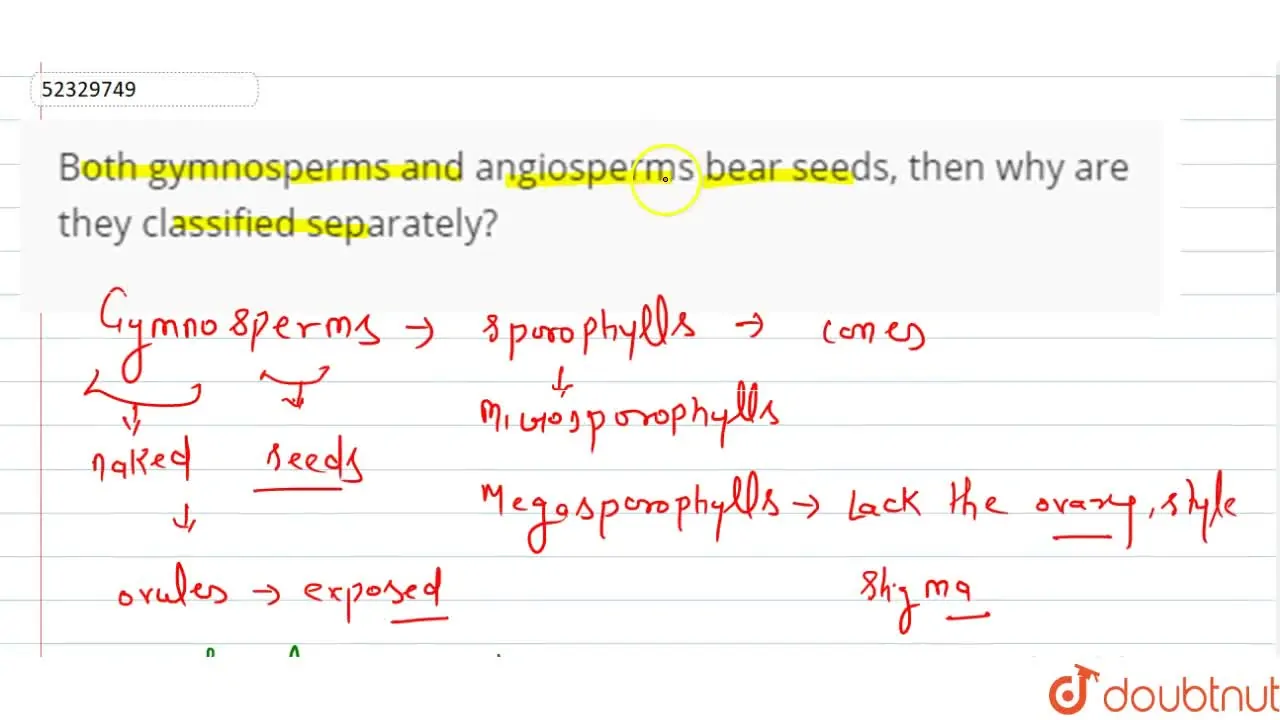Both gymnosperms and angiosperms bear seeds, then why are they classified separately?
Video Solution
Text Solution
Gymnosperms and angiosperms are seed-producing plants with diplontic life cycles.
In gymnosperms, the sporophylls are aggregated to form compact cones. The microsporophylls are broad and are not distinguished into filaments and anthers. The megasporophylls are woody and lack the ovary, style, and stigma, because of which the ovules lie exposed. The female gametophyte consists of archegonia. The fertilisation process involves the fusion of a male gamete with the female gamete. Their endosperm is haploid. The produced seeds are naked as there is no fruit formation.
Angiosperms are also known as flowering plants. They have sporophylls that aggregate to form flowers with the perianth. The microsporophylls consist of stamens containing pollen sacs. These sacs bear the male gametes called pollen grains. The megasporophylls are delicate and rolled, forming carpels that contain the ovary, style, and stigma. The ovules are present inside the ovary. The archegonium is replaced by an egg apparatus. Two male gametes enter the egg apparatus at the time of fertilisation. One male gamete fertilises the egg and the other fuses with the diploid secondary nucleus to form an endosperm. The resulting endosperm is thus triploid. In addition, in angiosperms, the development of seeds takes place inside the fruits.
|
Updated on:21/07/2023
Related Playlists
Similar Questions
Gymnosperms|Angiosperms|OMR
View SolutionAre gymnosperms and angiosperms seed-bearing plants ?
View SolutionPrimitive angiosperms bear:
View SolutionGymnosperm|Angiosperm|OMR
View SolutionGymnosperms differ from angiosperms in
View SolutionAngiosperms and gymnosperms resemble in having
View SolutionGymnosperms and angiosperms show resemblances in many characteristics except
View SolutionAngiosperms and gymnosperms are collectively called as :-
View SolutionGymnosperms are different from angiosperms in
View SolutionName the sex organs of gymnosperms and angiosperms
View Solution


